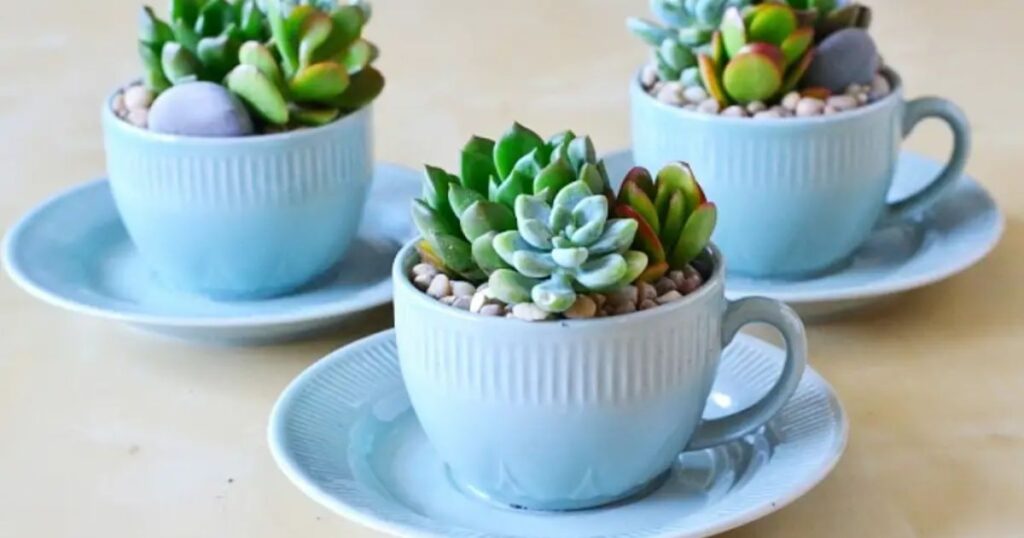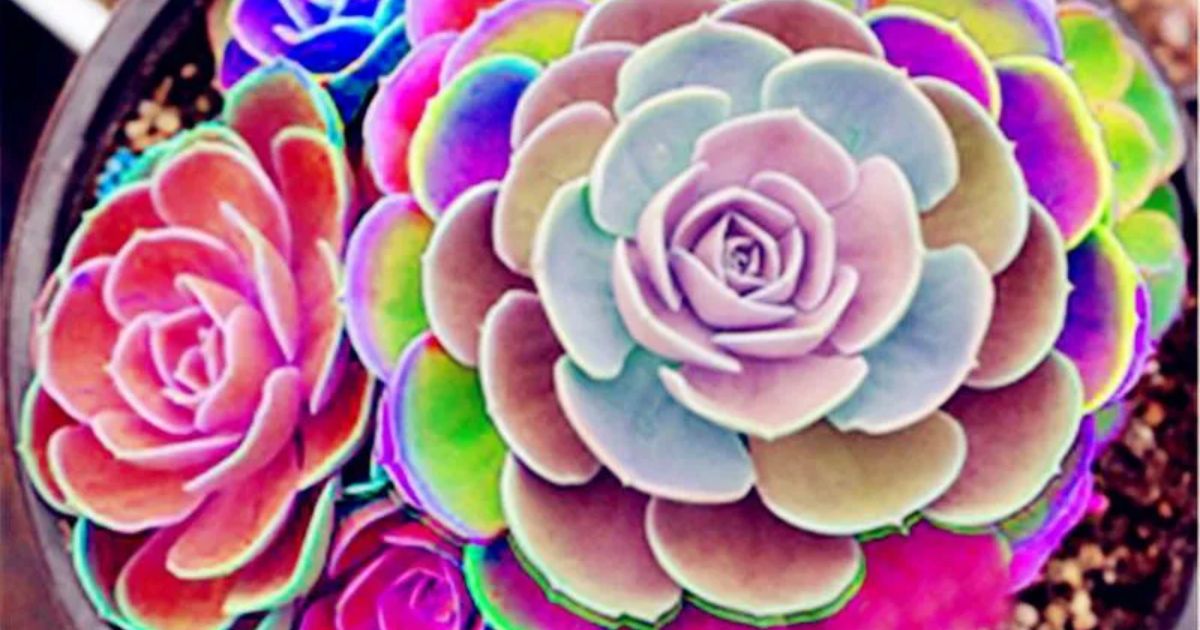Placing your succulents outside involves transferring them from an indoor environment to an outdoor setting. Succulents are a diverse group of plants known for their ability to store water in their leaves, stems, or roots.To Put My Succulents Outside means relocating these plants to an external environment .
Can I Put My Succulents Outside is a common question among plant enthusiasts seeking to optimize the health and growth of their succulents. Whether you’re a beginner or an experienced gardener, understanding the factors involved in moving succulents outdoors is crucial.
When contemplating the decision to Put My Succulents Outside it’s essential to consider the specific needs of the succulent species in question. Different succulents have varying sunlight requirements, water preferences, and temperature tolerances. Understanding these factors helps ensure a smooth transition for your plants, promoting their well-being and enhancing their aesthetic appeal.
When to Plant Succulents in the Spring

Spring is an ideal time to plant succulents outdoors, as the milder temperatures and increased sunlight create optimal conditions for their growth. During this season, the soil tends to warm up, providing a welcoming environment for succulents to establish their roots. If you find yourself wondering why are the leaves falling off my succulent, it could be attributed to various factors.
Changes in environmental conditions, such as temperature fluctuations or overwatering, may contribute to leaf drop. Observing these signs and adjusting care accordingly ensures a healthier, more resilient succulent during the critical establishment period in the spring.”
It’s crucial to choose a well-draining soil mix and plant when the risk of frost has passed. This timing allows the succulents to acclimate gradually to their new surroundings, reducing the risk of shock and ensuring a successful transition.
As you embark on planting succulents in the spring, it’s essential to ease them into the sunlight and heat. Succulents that have been indoors may not be accustomed to direct sunlight, so introducing them gradually helps prevent sunburn and stress.
Begin by placing them in a location with filtered sunlight and gradually expose them to longer periods of sunlight each day. Additionally, be mindful of temperature fluctuations, especially if there is a sudden heatwave, and provide shade if needed to protect your succulents during this adjustment period.
Planting Succulents Outside
Planting succulents outside requires thoughtful consideration to ensure their well-being in the new environment. Selecting the right spot is crucial, as succulents thrive in well-draining soil and benefit from ample sunlight.
When planting in the ground, amend the soil with gravel or sand to enhance drainage. For container planting, choose pots with drainage holes to prevent waterlogging. Gently remove the succulent from its pot, loosen the roots, and plant it at the same level it was in the container. Water sparingly initially and gradually increases as the succulent establishes itself.
For optimal succulent care outdoors, monitoring water requirements is key. Succulents are drought-tolerant, so it’s essential not to overwater. Allow the soil to dry out between watering sessions to prevent root rot.
Keep an eye on the weather conditions, adjusting watering frequency based on temperature and humidity levels. Additionally, inspect your succulents regularly for signs of pests or diseases. Promptly address any issues to maintain the health and vitality of your outdoor succulent garden.
Succulent Care Outdoors
| Aspect | Care Tips |
| Sunlight | Provide ample sunlight, gradually acclimating succulents to direct sun exposure. |
| Watering | Water sparingly, allowing the soil to dry out between watering sessions. |
| Soil and Drainage | Use well-draining soil and containers with drainage holes to prevent waterlogging. |
| Monitoring and Pruning | Regularly inspect for pests or diseases, and prune as needed to maintain a healthy appearance. |
Fertilizing Outdoor Succulents
Fertilizing outdoor succulents should be approached with caution, as these plants are adapted to nutrient-poor environments. Applying a diluted, balanced fertilizer during the growing season, such as spring and summer, can provide the necessary nutrients.
Avoid over-fertilizing, as succulents are sensitive to excess nutrients, which can lead to leggy growth or other issues. It’s advisable to follow the recommended dosage on the fertilizer packaging and apply it sparingly to prevent any adverse effects. Additionally, consider using a specialized succulent fertilizer with a formulation tailored to their unique needs.
Planting Succulents Outside: Container vs. In-Ground
When deciding between planting succulents in containers or in the ground, consider the specific needs of your plants and the available space in your garden. Container planting offers greater flexibility, allowing you to move succulents around to optimize sunlight exposure and experiment with different arrangements.
Containers also provide better control over soil composition and drainage. On the other hand, planting in the ground allows succulents to spread and establish a natural look. Ensure proper soil preparation for in-ground planting, adding amendments to enhance drainage and prevent water accumulation.
Recommended Outdoor Succulent Varieties
Choosing the right succulent varieties for outdoor planting is crucial for a successful and visually appealing garden. Some popular outdoor succulents include Sempervivum (Hens and Chicks), Sedum varieties, and Echeveria species.
These plants are known for their resilience and ability to thrive in various climates. Sempervivum forms attractive rosettes, while Sedum offers diverse foliage shapes and colors. Echeveria, with its striking rosettes, adds a touch of elegance to outdoor succulent gardens. Researching the specific characteristics of each variety can help you select the best options for your outdoor succulent display.
FAQ’s
What is the best time to plant succulents outdoors?
Spring is the ideal season for planting succulents outdoors, as it offers milder temperatures and increased sunlight, providing optimal conditions for their growth.
How should I acclimate my indoor succulents to outdoor conditions?
Gradually expose indoor succulents to direct sunlight by placing them in filtered light initially, allowing them to adapt and preventing sunburn.
Is it better to plant succulents in containers or in the ground?
The choice between containers and in-ground planting depends on factors like space and control. Containers offer flexibility, while in-ground planting allows for a natural spread.
Do outdoor succulents require fertilization?
While outdoor succulents benefit from diluted, balanced fertilizer during the growing season, it’s crucial to avoid over-fertilizing to prevent issues like leggy growth.
How often should I water outdoor succulents?
Water outdoor succulents sparingly, allowing the soil to dry out between watering sessions to prevent root rot and maintain their drought-tolerant nature.
Conclusion
In the world of succulents, embracing the great outdoors becomes a journey of discovery and care. As you place your succulents outside, remember the dance of seasons, the gentle acclimation to sunlight, and the art of selecting the perfect spot. Whether in containers or in the ground, these hardy plants thrive with a touch of mindful gardening.
By understanding their needs and following simple guidelines, you embark on a path where vibrant rosettes and resilient foliage create an outdoor succulent haven. So, let your succulents bask in the warmth of the sun, dance in the breeze, and grow gracefully in the open air, as you nurture a garden that speaks the language of simplicity and natural beauty.










